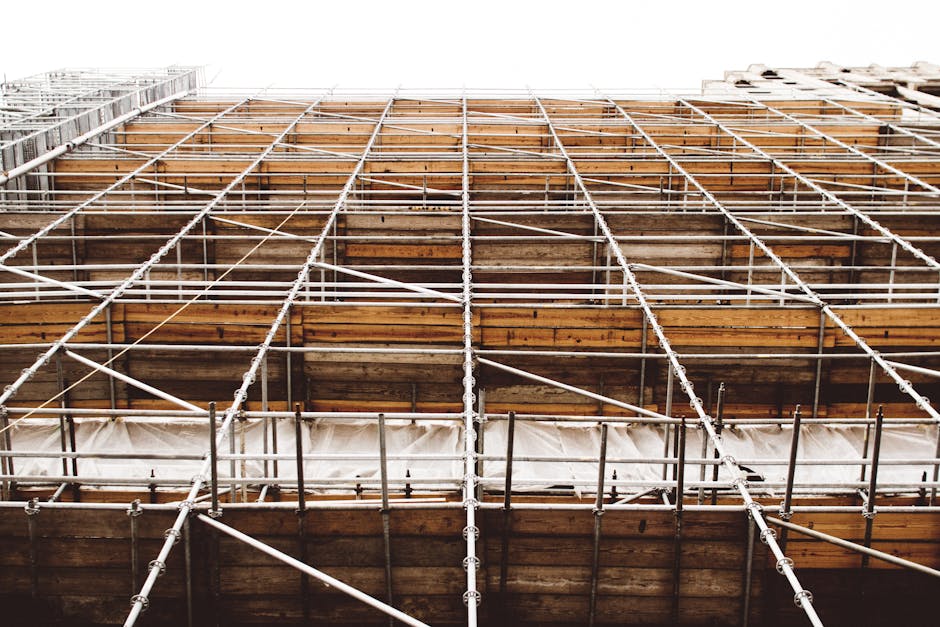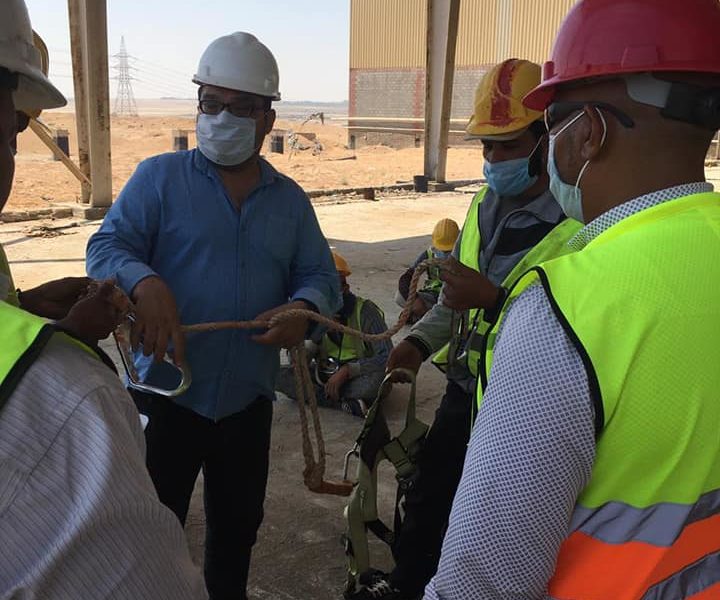Scaffold Safety 101: Tips and Tricks You Need to Know! (How-To)
Construction work is not only tiring but also one of the high-risk jobs. In construction work, scaffolds are one of the essential tools that offer a safe and secure platform for the workers to operate on various heights. However, scaffolds can be a potential threat to the workers if adequate safety precautions are ignored. According to statistics, about 65% of workers use scaffolds regularly, and each year, thousands of workers get injured, and many lose their lives in scaffold-related accidents. Since scaffolds are an integral part of construction work, it is essential to know about scaffold safety measures. This blog aims to create awareness about scaffolding safety tips and tricks to help prevent accidents and injuries.
 Photo by Josh Sorenson on Pexels
Photo by Josh Sorenson on PexelsImportance of Scaffold Safety: Why it Matters
Scaffold safety is crucial for every construction worker. One mistake can lead to irreparable damage, loss of life, or severe injuries. Construction companies must prioritize the wellbeing of the workers, and scaffold safety is no exception. The Occupational Safety and Health Administration (OSHA) guidelines for scaffolds safety help construction companies to maintain safety standards while working on heights.
The Consequences of Neglecting Scaffold Safety
The potential hazards of neglected scaffold safety measures are dire. If proper safety measures are ignored, it can lead to serious injuries or even fatal accidents. The possible consequences of neglecting scaffold safety are:
• Fatal or severe injury
• Suspension or cancellation of the construction permit
• Lawsuits against construction companies
• A negative impact on the company’s reputation
• Financial damages
Scaffold accidents not only put the workers’ lives at risk but also affect the financial stability of construction companies. Therefore, construction companies must prioritize scaffold safety measures.
Common Risks and Hazards on Scaffolds: Avoiding Accidents and Injuries
Scaffolds have multiple risks and hazards, such as falls, slips, electrocution, and falling objects. However, these hazards can be avoided if safety measures are taken. Here are some tips to avoid accidents and injuries on scaffolds:
Proper Use of Personal Protective Equipment (PPE) on Scaffolds
The workers must wear PPE, such as a helmet, safety shoes, goggles, gloves, and a safety harness to prevent injuries. PPE provides safety from falls, slips, and other potential hazards on scaffolds. The protective equipment helps to absorb the force or impact of the fall, which ultimately reduces the severity of the injuries.
Tips for Safe Access and Exit from Scaffolds
The access and exit to scaffolds are equally important, and as such, the workers need to:
• Use proper access ladders
• Ensure that the access ladders are sturdy and correctly secured.
• Never climb on the cross braces as a ladder
• Keep the access areas free of any equipment or tools
These are essential tips to avoid accidents while accessing or exiting the scaffold.
Essential Safety Measures for Scaffolds: What You Need to Know
Here are some essential safety measures that companies must adopt to minimize scaffold accidents:
Inspection and Maintenance of Scaffolds
The scaffolds must undergo regular inspection before use to ensure that they are secure, sturdy, and stable. Regular maintenance of scaffolds ensures that they remain functional and reliable. Companies should consider hiring a professional to check the scaffolds regularly.
Proper Assembly and Disassembly of Scaffolds
The assembly and disassembly of scaffolds require expertise and knowledge. If not done correctly, it can lead to disastrous accidents. Companies should ensure that only certified professionals assemble and disassemble the scaffold. Furthermore, they should follow the manufacturer’s instructions to ensure that the scaffold is erected correctly.
Training and Certification for Scaffolding
Training and certification programs are essential for workers’ safety on scaffolds. Hire professionals who are trained and skilled in handling scaffold equipment. Furthermore, ensure that the certification in scaffolding is up-to-date. The certifications ensure that the workers have the necessary knowledge and expertise to work on scaffolds safely.
Planning and Communication
Effective planning and communication are essential to prevent accidents on the scaffold. Before using the scaffold, workers must conduct a safety meeting to discuss the task, and everyone’s role should be assigned. Workers must have an understanding of the safety procedures, potential hazards, and emergency plans.
Fall Protection on Scaffolds
Fall protection on scaffolds is an essential aspect of scaffolding safety. Companies must install fall protection guards that meet OSHA standards. Properly installed and well-maintained guardrails provide an excellent defense system against falls from the scaffold.
Weather Conditions and Scaffolds
Weather conditions, such as high winds, rain, or snow, can affect the stability of scaffolds. Therefore, companies should have guidelines that dictate when construction workers can work on scaffolds during adverse weather conditions. When it is deemed too dangerous to work on a scaffold, workers should be instructed to stop work immediately.
Conclusion
In conclusion, scaffolding safety measures are essential to prevent accidents and injuries on construction sites. To ensure the safety of workers, companies must prioritize safety measures such as regular inspections, proper assembly, disassembly of scaffolds, and fall protection. Workers, on the other hand, must wear proper PPE and receive certified training on scaffolding safety measures. It is the responsibility of every construction company to prevent scaffold-related incidents and accidents. Let us work together to make scaffold safety a top priority.


